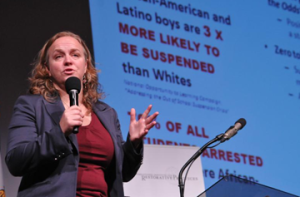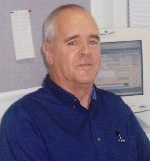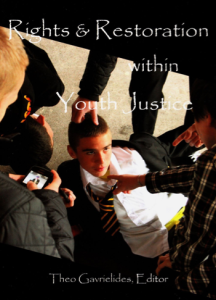News & Announcements
- Details
- Written by joshua Wachtel
 Hilary Davies, the restorative practices project manager for the city and county of Swansea, Wales, UK, wrote the following post to discuss the region's efforts to become a restorative city.
Hilary Davies, the restorative practices project manager for the city and county of Swansea, Wales, UK, wrote the following post to discuss the region's efforts to become a restorative city.
“It’ll change your life, it’ll change you!”
These are the opinions of Chelsea who was excluded from two comprehensive schools due to bad behaviour resulting in her being moved to a pupil referral unit. As the only girl out of 13 boys in the class, she found this tough, and there were times when she’d ‘kick off’ and retreat to the corner of the class. Following the training the staff received in Restorative Practice (RP), her form tutor, already passionate about using the approach, started using the question cards to deal with disputes in the class. Chelsea took to this immediately. Throughout the last few years, whenever there had been conflict in her mainstream school it had resulted in raised voices and anger between herself and staff, which achieved nothing more than her walking away frustrated about not being heard. Using RP and having an opportunity to talk about what happened has been a turning point in her attitude. She has consequently written to both headteachers of the schools she previously attended to apologise for her behaviour, describing how she now understands the impact her behaviour has had on others. Her story is very clear and sad, as she truly believes that if a restorative approach had been used in her mainstream schools she might still be there with her friends sitting exams and getting her qualifications, which is her desire but sadly not an option at present.
- Details
- Written by Joshua Wachtel
In the US and Canada, the failing policies of zero tolerance are giving way in many schools to restorative justice and restorative practices. These schools are demonstrating one after another that restorative practices can successfully reduce suspensions, expulsions and other punitive responses to wrongdoing. Schools using restorative justice address wrongdoing, but they do it in an inclusive way that does not stigmatize students but instead aims to teach and reintegrate them into regular school programming.
In the Kawartha Lakes region in central Ontario, Canada, the local newspaper (Kawartha.com) has reported on significant reductions in suspensions and expulsions at Trillium Lakelands District School Board, which in recent years implemented restorative practices on a district-wide basis.
- Details
- Written by Joshua Wachtel
After two years of preparation, the first issue of Restorative Justice: An International Journal (RJIJ), published by Hart Publishing, Oxford (UK), appeared earlier this year, and the second issue is now available electronically.
The official launch of RJIJ is September 5, 2013, at the European Society of Criminology Annual Conference, in Budapest, Hungary, featuring a lecture by Prof. Shadd Maruna, Queen's University Belfast, UK, entitled, "An Homage to Albert Eglash: Strengths Based Approaches to Restoration." All are welcome. Read a 2003 eForum article about Albert Eglash.
- Details
- Written by Joshua Wachtel
 Police from Belarus during restorative circle trainingSimon Saxton, Residential and Alternative Provisions Manager, and Jacqui Raynor, Police Inspector, both for North Yorkshire, UK, and trained as IIRP UK trainers, recently visited the Gomel region of the Republic of Belarus, under the auspices of the Chernobyl Children's Project (UK), to deliver restorative practices training.
Police from Belarus during restorative circle trainingSimon Saxton, Residential and Alternative Provisions Manager, and Jacqui Raynor, Police Inspector, both for North Yorkshire, UK, and trained as IIRP UK trainers, recently visited the Gomel region of the Republic of Belarus, under the auspices of the Chernobyl Children's Project (UK), to deliver restorative practices training.
Trainees received an introduction to restorative practices and circles training during the five-day visit in May, 2013. Participants included police officers assigned to juvenile correction services, as well as teachers and psychologists working primarily in vocational schools. A model circle was filmed and shown on local television.
- Details
- Written by Joshua Wachtel
 Photo by woodleywonderworks at Flickr Creative CommonsRoss Brenneman at EdWeek's "Rules for Engagement" blog reports on a recent pole, the "Phi Delta Kappa/Gallup annual national survey," that shows few Americans have heard of "Common Core Standards," which have been adopted by all but four states, and even fewer understand what they are.
Photo by woodleywonderworks at Flickr Creative CommonsRoss Brenneman at EdWeek's "Rules for Engagement" blog reports on a recent pole, the "Phi Delta Kappa/Gallup annual national survey," that shows few Americans have heard of "Common Core Standards," which have been adopted by all but four states, and even fewer understand what they are.
However, according to Brenneman, "There was huge support for the idea that schools should address social-emotional skills. Over 50 percent of respondents displayed strong agreement with the following statements:
- Details
- Written by Joshua Wachtel
 ArchDaily accompanied their interview of VanBuren with this photo, a redesign of a courtroom from one of VanBuren’s workshops courtesy of FOURM Design StudioThis piece caught my attention for a number of reasons, not least because it comes from such a surprising and fresh direction. In a recent article titled "Restorative Justice: An Interview with Deanna VanBuren," ArchDaily, a trade publication for architects and designers, notes that the group Architects, Designers and Planners for Social Responsibility (ADPSR) "is campaigning to have the [American Institute of Architects] forbid its members from designing prisons" as a form of protest against the punitive U.S. penal system.
ArchDaily accompanied their interview of VanBuren with this photo, a redesign of a courtroom from one of VanBuren’s workshops courtesy of FOURM Design StudioThis piece caught my attention for a number of reasons, not least because it comes from such a surprising and fresh direction. In a recent article titled "Restorative Justice: An Interview with Deanna VanBuren," ArchDaily, a trade publication for architects and designers, notes that the group Architects, Designers and Planners for Social Responsibility (ADPSR) "is campaigning to have the [American Institute of Architects] forbid its members from designing prisons" as a form of protest against the punitive U.S. penal system.
But the editors are pleased to have discovered the work of Deanna VanBuren of FOURM Design Studio, who says she is looking at "the question of how architects might actually change the system." Amazingly, she is doing so by looking at prison and court design through the lens of restorative justice and restorative practices.
- Details
- Written by Joshua Wachtel
 The Kentucky Center for Restorative Justice and the Children’s Law Center present Restorative Practices: A Statewide Symposium at Spalding University on Thursday, October 10th, 2013, from 9 am to 5 pm. The theme of the symposium is "Teaching Leaders to Implement Restorative Practices for Youth."
The Kentucky Center for Restorative Justice and the Children’s Law Center present Restorative Practices: A Statewide Symposium at Spalding University on Thursday, October 10th, 2013, from 9 am to 5 pm. The theme of the symposium is "Teaching Leaders to Implement Restorative Practices for Youth."
IIRP President Ted Wachtel will present a keynote address on themes from his new book, Dreaming of a New Reality: How restorative practices reduce crime and violence, improve relationships and strengthen civil society. Sujatha Baliga, director of the Restorative Justice Project for the National Council for Crime & Delinquency will also be featured.
For more information call 502-873-4314 or register online.
- Details
- Written by Joshua Wachtel
- Details
- Written by Joshua Wachtel
 Cami Anderson, State District Superintendent, Newark Public SchoolsIn a press release titled "Zero Tolerance for Zero Tolerance Policies," Newark Public Schools (NPS) and Newark Police Department (NPD) announce the launch of a "Historic Initiative with the International Institute for Restorative Practices to End the School to Prison Pipeline."
Cami Anderson, State District Superintendent, Newark Public SchoolsIn a press release titled "Zero Tolerance for Zero Tolerance Policies," Newark Public Schools (NPS) and Newark Police Department (NPD) announce the launch of a "Historic Initiative with the International Institute for Restorative Practices to End the School to Prison Pipeline."
The article says:
Staff members from NPS joined forces with NPD to shift school discipline policies from zero tolerance to youth development. The training was facilitated by the world renowned International Institute for Restorative Practices (IIRP). The initiative was spearheaded by NPD Police Director Samuel A. DeMaio and NPS Superintendent Cami Anderson.
- Details
- Written by Joshua Wachtel
 Ivan Webb, a retired principal and teacher from Tasmania, Australia, tweets about restorative practices (@IvanWebb). He collects his weekly updates in a weekly online newspaper format, called Restorative Schools (embedded below). In last week's edition, he posted a short sidebar editorial in which he argues that while restorative practices are effective for responding to serious incidents, people should not stop there but consider the reasons for adopting a more proactive approach, "to be restorative for all students all the time."
Ivan Webb, a retired principal and teacher from Tasmania, Australia, tweets about restorative practices (@IvanWebb). He collects his weekly updates in a weekly online newspaper format, called Restorative Schools (embedded below). In last week's edition, he posted a short sidebar editorial in which he argues that while restorative practices are effective for responding to serious incidents, people should not stop there but consider the reasons for adopting a more proactive approach, "to be restorative for all students all the time."

Restorative Works Year in Review 2023 (PDF)
All our donors are acknowledged annually in Restorative Works.

